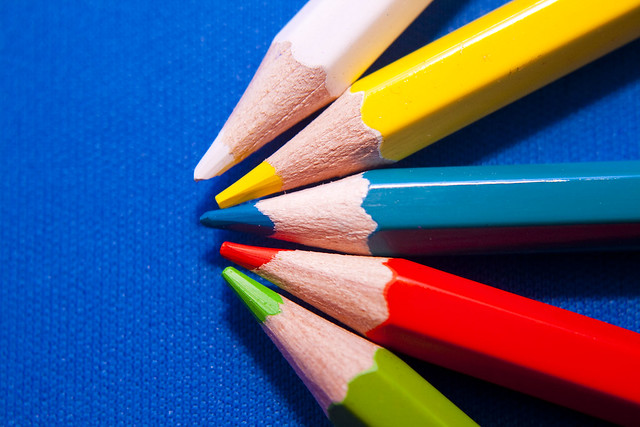Today while looking into the origins of the Dutch word for pencil – potlood [pɔt.loːt] – I found some interesting connections to words other languages.
Potlood also means crayon, and comes from pot (jar, pot) & lood (lead, plumb bob). Apparently it was originally a name for graphite, and was used for glazing pots, but was misidentified as a form of lead [source].
Other words featuring pot include:
- potloodetui = pencil case
- potloodslijper = pencil sharpener
- bloempot = flower pot, planter
- doofpot = cover-up (“deaf pot”)
- potdoof = stone deaf, completely deaf
- fooienpot = tip jar, stock pot
- kookpot = cooking pot, saucepan, cauldron
- stamppot= stew, mash, stamppot (a traditional Dutch dish made of potatoes mashed with one or several vegetables)
Lood comes from the Middle Dutch lôot (lead), from Old Dutch *lōt, from Proto-Germanic *laudą (lead), from the Proto-Celtic *loudom (lead), ultimately from the Proto-Indo-European *plewd- (to fly, flow, run) [source].
For the same Proto-Celtic root we get luaidhe, which is lead in Irish and Scottish Gaelic, leoaie (lead) in Manx, the English word lead, and related words in other Germanic languages [source].
Words for lead in Welsh (plwm), Cornish (plomm / plobm) and Breton (plom), come from the Latin plumbum (lead (metal), lead pipe, pencil), which is also the root of the English words plumb, plumber and plumbing [source].
A plumber in Dutch is a loodgieter [ˈloːtˌxi.tər] and plumbing is loodgieterswerk – a gieter [ˈɣi.tər] is a person who pours, e.g. a caster, or a watering can, so a loodgieter is someone who pours lead or a lead caster [source].

I know an Austrian/Viennese who believed that a “Bleistifte” (‘pencils’, literally ‘lead /lɛd/-writing instruments’) are poisonous, and a danger to her daughter, because they contain lead. The opposite is true, of course, the “lead” of contemporary pencils is pure graphite, which is carbon that all living creatures (as well as viruses) depend on.
Charlie, it turns out that modern pencils (“modern” beginning around the 1800’s) do not actually use pure graphite, but a mixture of graphite and clay, which is ground together and baked into rods. The clay acts to soften the graphite and make it easier to write with; the more clay, the softer the pencil “lead” is.
For a child to be “poked” with a “lead” pencil will not give them “lead poisoning” as children often mistakenly believe, but it could cause a minor skin infection, and it hurts too, so it’s still not a nice thing for kids to do 🙂